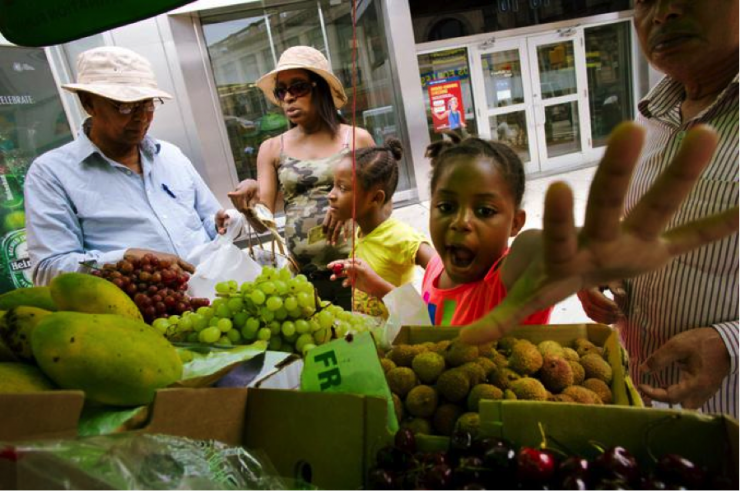New York City’s Green Cart Program Combats Food Deserts
By: Isabella Jaye
Here at Reset San Francisco we’re always excited to hear what innovative approaches other cities are taking to Government 2.0, especially when it comes to making sure that all residents have access to healthy and affordable food. Food desserts, defined as “urban neighborhoods and rural towns without ready access to fresh, healthy, and affordable food,” are serious public health hazards that impede resident’s ability to provide healthful food for their families. New York City’s Green Cart program, implemented in 2008 by then-mayor Michael Bloomberg, aims to help eliminate these food deserts and make healthy food the rule and not the exception in low-income areas.
Revitalizing Neighborhoods and Providing Job Opportunities
The Green Carts focus on selling healthy and affordable food that is relevant to a wide variety of cultures. Green Carts, selling produce that is generally cheaper than what residents could purchase at the grocery store, can be found in the Bronx, Brooklyn, Manhattan, Queen and Staten Island. The carts accept food stamps, a policy which enables low-income residents to purchase high quality produce.
The goals of the initiative are twofold—increase consumption of healthy food and provide food cart vendors with the opportunities to support their families. Vendors can earn up to $40,000 a year and with relatively low overhead cost the carts can be their ticket out of poverty and in to entrepreneurship.
The results are clear—access to healthy fruits and vegetables helps combat serious health issues and spurs on a greater community-wide commitment to eating nutritious food.
According to a study conducted by Columbia’s School of International and Public Affairs, the Green Cart program has, “increased access to healthy food in otherwise underserved high-density and low-income neighborhoods, influenced customers’ consumption of fruits and vegetables, and created jobs for immigrant entrepreneurs.” 71 percent of those survey reported increasing their consumption of fresh fruits and vegetables and 80 percent of the vendors would classify themselves as either very or somewhat profitable.
So let’s take a page out of New York’s book and work to facilitate widespread access to healthy and affordable food. Check out this TEDxManhattan video to learn more about how the program’s widespread positive effects within the communities it serves.
Eliminating Food Deserts in San Francisco
It’s no secret that San Francisco is known for some pretty amazing cuisine. From the food trucks at OustideLands to the countless world-renowned restaurants, we’re lucky to live in a city with such a vibrant food culture. However not all of our residents have equal access to the food that makes this city so special.
The good news is that San Francisco ranks second on the list of major American cities with the highest percentage of residents within 5-minute walking distance to a food vendor—but that doesn’t mean we can’t push ourselves to do better. According to the ranking, 41 percent of San Franciscans still do not have easy access to food for their families, a serious public health issue that is most prevalent in lower-income neighborhoods such as the Bayview-Hunters Point.
Programs such as the Quesada Gardens Initiative, a volunteer-run fruit and vegetable garden in the Bayview-Hunters Point are making strides towards increasing city-wide access to fruits and vegetables. Jeffrey Betcher, who founded the initiative, points to community engagement as the key to eliminating food deserts, “The hidden ingredient is social cohesion, and people working together to solve their own problems.” This spirit of community engagement and crowdsourcing solutions to problems is part of what makes Reset San Francisco run and we’re excited to see how programs such as Green Carts and Quesada Gardens will continue to fight for equal access to healthy food for all residents no matter their socioeconomic status.








